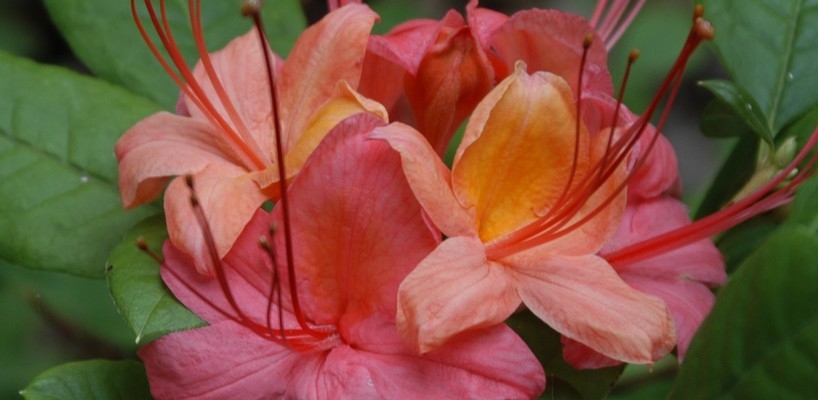
Azalea Collections
Visitors come to the U.S. National Arboretum’s Azalea Collections every spring to witness one of Washington’s premier spring attractions: thousands of azaleas covering the flanks of Mount Hamilton in a blaze of color. The first warm days bring out the flowers, and the slopes take on a surreal, almost luminescent glow. Few shrubs have more impact on the spring landscape than azaleas.
The Glenn Dale Hillside is perhaps the most spectacular in terms of its display and variety of azaleas blooming within a short period of time. This planting, located on the south slopes of Mount Hamilton, sprang from the breeding work of former Arboretum Director Benjamin Y. Morrison. Morrison envisioned the modern hybrid azalea as we know it today and successfully married the large flowers and exciting colors of tender azaleas in the Southern Indian group with the hardiness of more northerly species.
In 1952, the walled Morrison Garden was completed using 31,500 bricks salvaged from a schoolhouse located in what is now the Boxwood Collection. It still serves as the hub that unifies the Azalea Collection and is the location of the National Arboretum’s collection of named Glenn Dale azalea hybrids. Within the Morrison Garden, low hedges of English boxwood complement the formal design that showcases individual azalea specimens. To the southwest of the garden is a courtyard area shaded by the venerable branches of a mature lacebark pine (Pinus bungeana) and serves as an ideal spot to contemplate the peace and beauty of wakening spring.
To the north of the Morrison Garden, the Frederic P. Lee Garden spreads along the northeast slopes of Mount Hamilton. Dedicated in 1971, this garden features late blooming azaleas, primarily Satsuki cultivars planted around a small pond, which extend the azalea season into May and early June. Connecting the two formal gardens is the Henry Mitchell Cultivar Walk, named in honor of the revered Washington Post garden writer, and tells the story of the development of many other groups of hybrid azaleas, including but not limited to Gable, Robin Hill, Kurume, North Tisbury, Back Acres, and Aromi azaleas, Rhododendron kiusianum selections, and many others arranged by their informal hybrid or raiser groupings. For those contemplating landscape design, azaleas are also planted in color groupings (red, pink, salmon, purple, white, and bicolor) showcasing the diversity of size, shape, height, even bloom period of azaleas.
Tips for Visitors
The best way to see this collection is on foot. A network of rustic woodland trails follows the contours of Mount Hamilton and allows you to view the blossoms at close range. If you want a bit of exercise, you can follow the trail to the top of Mount Hamilton, one of the highest points in the District of Columbia. At the elevation of 240 feet above sea level, you’ll be treated to a view of the Capitol framed by trees. If you’re planning a visit, wear shoes suitable for walking on uneven rustic trails. Park in the Administration Building or M Street parking lots and access the collection by walking a short distance to one of the entrances. Most visitors want to take at least an hour to enjoy the blossoms. A sampling of Glenn Dale hybrids can also be seen from accessible areas around the Administration Building.
Peak bloom can vary by two weeks or more, depending on the weather, but usually takes place around the end of April. The earliest peak date reported in the last decade was April 15; the latest was May 4. Keep in mind that many azaleas are in bloom long after the peak and others might bloom early – there are usually some azaleas in bloom from early April until well into June.